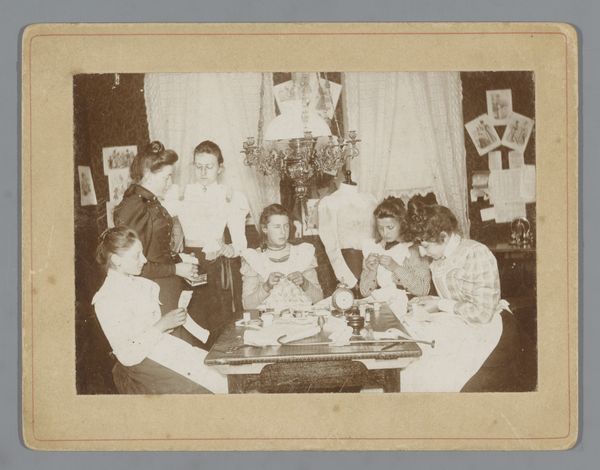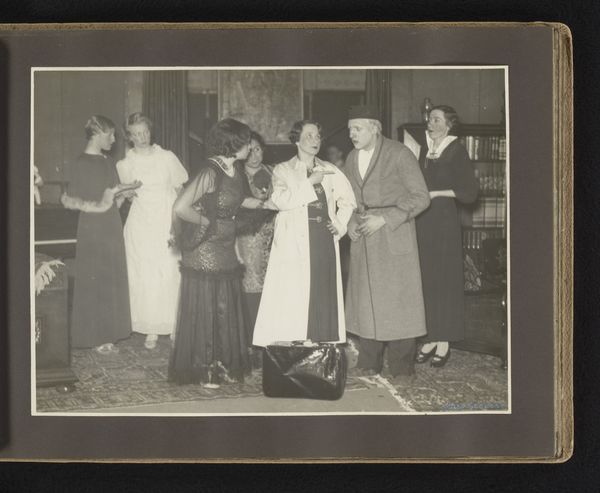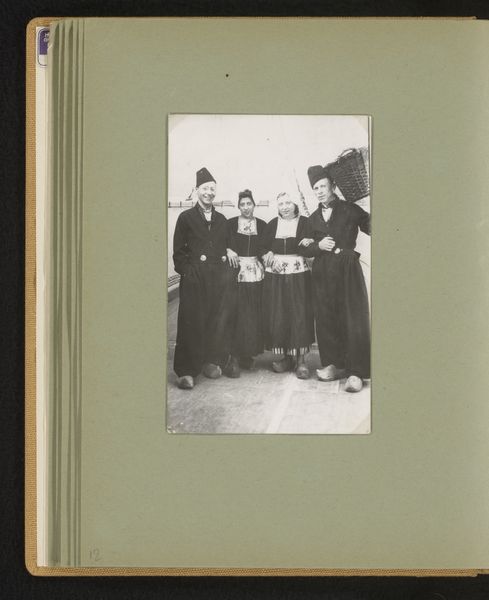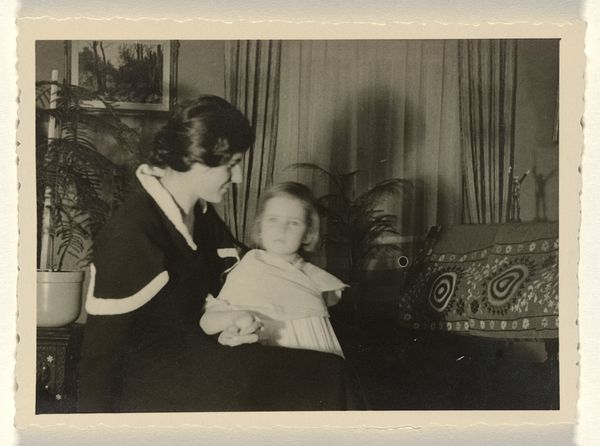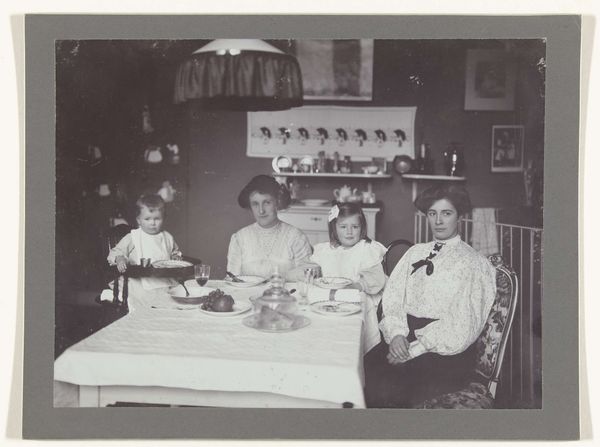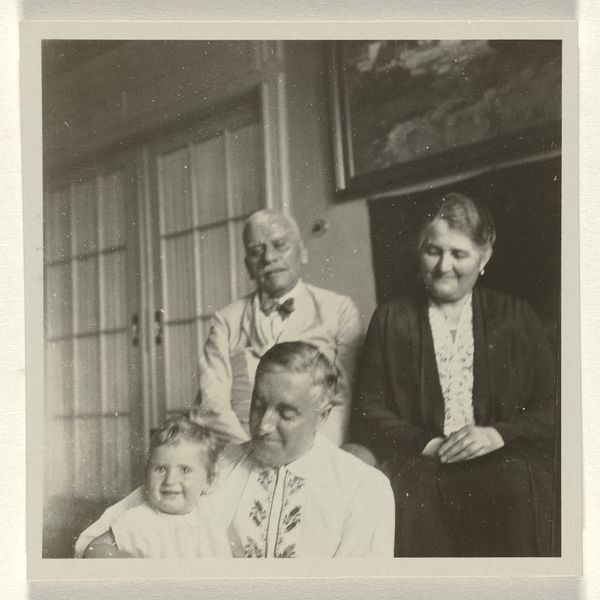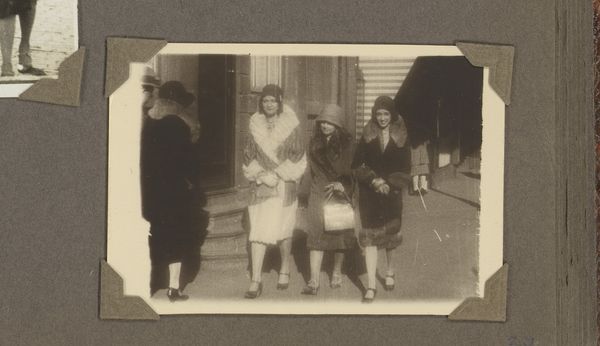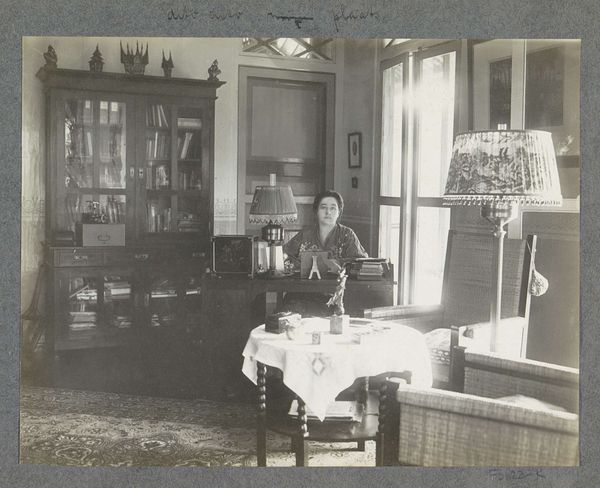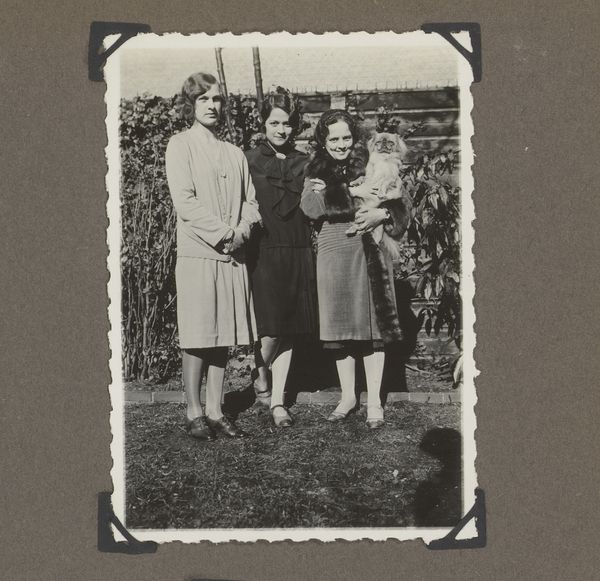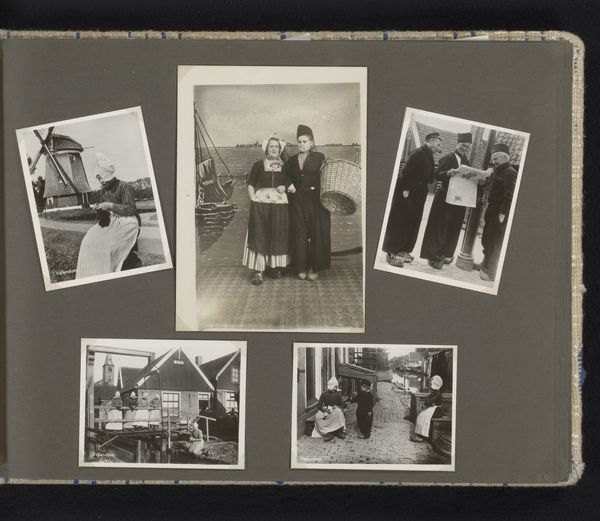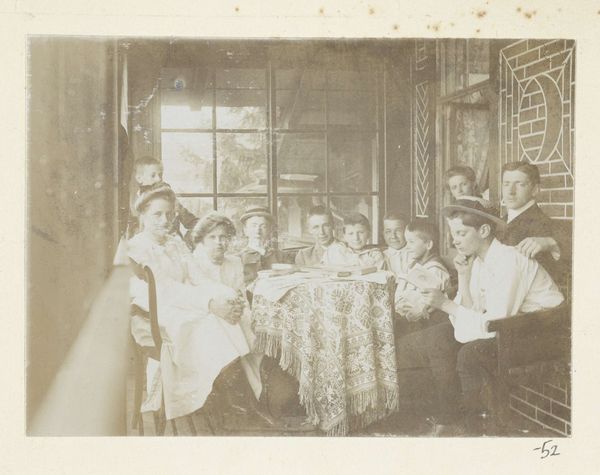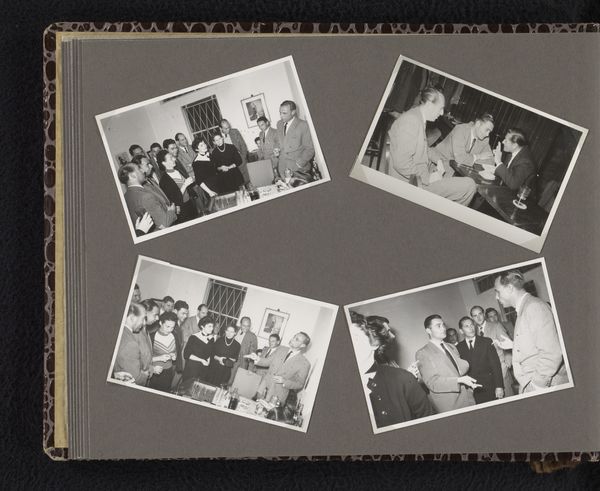
Isabel Wachenheimer en twee leden van de huishoudelijke staf van de familie Wachenheimer tijdens Kerst 1932, in Stuttgart 1932
0:00
0:00
print, photography, gelatin-silver-print
#
portrait
#
print photography
# print
#
archive photography
#
photography
#
historical photography
#
gelatin-silver-print
#
modernism
Dimensions: height 70 mm, width 100 mm
Copyright: Rijks Museum: Open Domain
Curator: This is a photograph entitled "Isabel Wachenheimer en twee leden van de huishoudelijke staf van de familie Wachenheimer tijdens Kerst 1932, in Stuttgart". A gelatin-silver print from 1932. Editor: It strikes me immediately as a tableau of understated formality, perhaps a staged portrait capturing a moment in time. The muted grayscale lends it a somber mood. Curator: It certainly is that. Thinking about this photograph, I am particularly drawn to the nuances of class and gender presented within this scene. Isabel, a member of the wealthy Wachenheimer family, is juxtaposed here alongside the staff, women also who are likely carrying the domestic labour of the household, their service here made even more stark as this is set during what appears to be Christmas celebrations. It poses questions around notions of labour, privilege, and perhaps the subtle tensions inherent in such relationships. Editor: There's an interesting composition too. The positioning of the subjects creates distinct planes. The texture from the intricate rug in the background forms another layer that pushes forward creating a very flat depth of field, thus keeping the viewer from moving too deeply into the image. Curator: Absolutely. And considering the year, 1932, one can't ignore the rising tide of political upheaval in Germany at the time. The Wachenheimer family were Jewish, which casts an even deeper shadow on this seemingly innocuous domestic scene, capturing the quiet before the coming storm, before they fled the country and Nazi regime to eventually come to America. The historical context informs everything we see. Editor: I see what you mean. There’s also this rather compelling repetition of shapes and tones—notice how the white trim of the maid's uniform and the bandaged woman’s forehead find echoes in other brighter areas, the edge of the table, and the little girl's clothes, tying these disparate elements together with a strange sense of symmetry. The doll on the table is another of the brighter points, perhaps it is there as a nod to what the actual intended viewing subject should be: the child of the house on Christmas day. Curator: I think viewing this portrait allows us to reflect on how socio-political undercurrents inform domestic scenes. These types of images show the importance of seeing archival work, to read their significance as traces of larger histories, not separate from them. Editor: Indeed, a careful arrangement of elements contributing to something beyond just visual appeal.
Comments
No comments
Be the first to comment and join the conversation on the ultimate creative platform.

